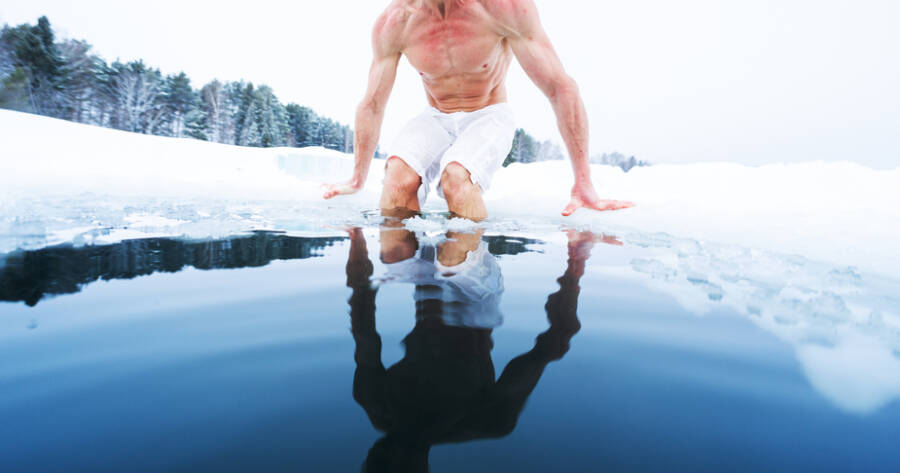Extreme temperature therapies, including cold plunges and sauna therapy, have gained massive popularity among athletes, biohackers, and wellness enthusiasts. While these practices have been around for centuries—rooted in Scandinavian, Russian, and Japanese traditions—modern science is now uncovering their potential health benefits. From boosting circulation to improving mental resilience, cold and heat therapies are becoming mainstream wellness tools. But how do they work, and are they truly beneficial? This article explores the science, benefits, and potential risks of cold plunges and sauna therapy.
The Science Behind Cold Plunges
Cold water immersion, commonly referred to as a cold plunge, involves submerging the body in water typically between 50°F (10°C) and 59°F (15°C) for a few minutes. This sudden exposure to cold triggers a physiological response known as cold thermogenesis, where the body works to maintain its core temperature, leading to several health benefits:
- Reduced Inflammation and Muscle Recovery: Studies have shown that cold plunges can decrease muscle soreness and inflammation, making them popular among athletes for post-exercise recovery.
- Improved Circulation: The cold constricts blood vessels, and upon exiting the water, they rapidly dilate, enhancing overall blood flow.
- Mental Resilience and Mood Enhancement: Cold exposure activates the release of norepinephrine, a neurotransmitter linked to improved mood, alertness, and stress resilience.
- Metabolism Boost: Repeated cold exposure may activate brown fat, a type of fat that helps burn calories and regulate body temperature.
While cold plunges offer various benefits, they should be approached cautiously. Extended exposure to cold water can lead to hypothermia or shock, especially for individuals with underlying health conditions.
The Healing Power of Sauna Therapy
On the opposite end of the spectrum, sauna therapy involves exposing the body to high temperatures, usually between 160°F (70°C) and 200°F (93°C), for a set period. The most common types of saunas include traditional Finnish saunas, infrared saunas, and steam rooms. The heat triggers a physiological response similar to mild exercise, leading to multiple health benefits:
- Detoxification and Sweating: Saunas promote intense sweating, which may help eliminate toxins from the body.
- Cardiovascular Benefits: Regular sauna use has been associated with improved heart health and a reduced risk of cardiovascular disease.
- Relaxation and Stress Reduction: The heat stimulates the release of endorphins, the body’s natural feel-good chemicals.
- Enhanced Skin Health: Increased circulation to the skin can improve complexion and promote collagen production.
Though sauna therapy is generally safe, those with cardiovascular conditions should consult a healthcare provider before engaging in extreme heat exposure, as it can elevate heart rate and blood pressure.
Combining Cold Plunges and Sauna Therapy: Contrast Therapy
Many wellness practitioners advocate for contrast therapy, which involves alternating between cold plunges and sauna sessions. This practice is believed to maximize the benefits of both heat and cold exposure by rapidly switching between vasoconstriction (cold) and vasodilation (heat), leading to improved circulation and recovery.
Some reported benefits of contrast therapy include:
- Faster Muscle Recovery: Athletes often use contrast therapy to flush out metabolic waste and accelerate muscle repair.
- Enhanced Immune Function: Exposure to temperature extremes may stimulate immune system activity, potentially reducing the risk of illness.
- Boosted Energy and Mental Clarity: The rapid shift between hot and cold can create an invigorating effect, sharpening focus and improving mood.
A typical contrast therapy session may involve 15 minutes in a sauna followed by 2-3 minutes in a cold plunge, repeated for several rounds. However, individuals should listen to their bodies and avoid overexertion.
Who Should Avoid Extreme Temperature Therapy?
While cold plunges and sauna therapy offer impressive health benefits, they are not suitable for everyone. People with the following conditions should proceed with caution or consult a healthcare provider:
- Heart disease or high blood pressure: Both extreme heat and cold can put stress on the cardiovascular system.
- Respiratory issues: Sauna heat may exacerbate breathing difficulties in some individuals.
- Raynaud’s disease: Cold exposure can trigger vasospasms in those with circulation disorders.
- Pregnancy: Pregnant individuals should avoid extreme temperatures to prevent complications.
For beginners, it’s best to start with shorter exposure times and gradually build tolerance. Proper hydration and listening to bodily cues are essential for safe practice.
The Future of Temperature-Based Wellness
Cold plunges and sauna therapy are more than just wellness trends—they represent a shift toward holistic, natural approaches to health. With growing research supporting their benefits, these therapies are being integrated into sports recovery, mental health treatment, and overall well-being strategies. Whether seeking improved circulation, faster recovery, or a mental resilience boost, embracing extreme temperature therapy could be a game-changer in optimizing health and longevity.

